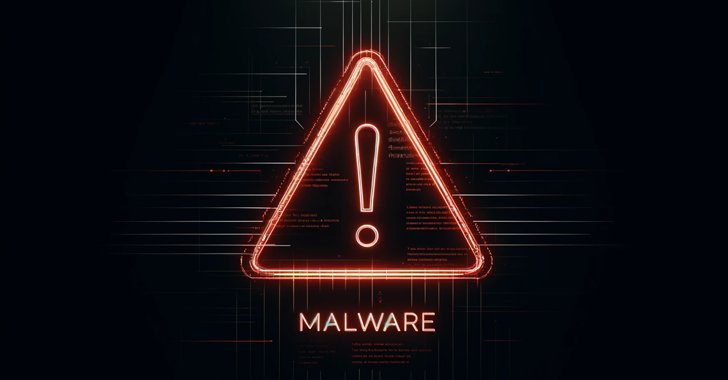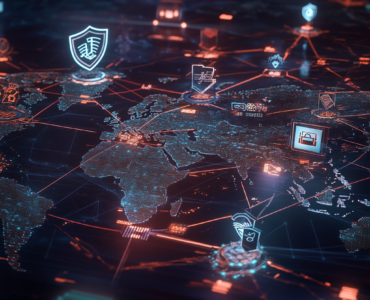As an experienced CISO in today’s fast-paced digital world, I often find myself pondering how technology evolves but also brings new challenges. One of the most alarming developments is artificial intelligence (AI) generating malware. Imagine a world where a single AI program can create 10,000 different variants of malware, successfully avoiding detection in about 88% of cases. This scenario is not far-fetched, and its implications are profound.
Understanding the Threat
Malware refers to software designed to harm computer systems. It can steal personal information, disrupt services, or even take control of a computer. Traditionally, cybersecurity teams fight this threat using signature-based detection methods. They develop a library of known malware signatures, much like fingerprints, to recognize and neutralize threats. However, AI complicates this landscape with its ability to learn and adapt quickly.
Consider the infamous WannaCry ransomware attack in 2017. It began as a simple piece of malware but spread across the globe, affecting over 200,000 computers in more than 150 countries. It exploited a weakness in Microsoft Windows systems, resulting in billions of dollars in damages.
Now, imagine if a sophisticated AI system took a similar attack and transformed it into thousands of variations overnight. Each variant might look different to safety systems, making it difficult for cybersecurity tools to identify them. Attackers could launch this AI-generated malware indiscriminately, targeting anyone from individuals to major corporations.

Why Should You Care?
You might wonder, “Why does this affect me?” Well, if you use technology—and let’s face it, who doesn’t?—you’re vulnerable. In our world, where everything connects online, a single drop of malware can cause widespread chaos. As cybersecurity leadership focuses on defending against these rapidly evolving threats, ordinary users and businesses must also stay informed and vigilant.
CISO Expertise Makes a Difference
As an information security executive, I know the importance of understanding these trends. The key to battling AI-generated malware lies in proactive measures. Companies must invest in advanced cybersecurity technologies that employ machine learning to enhance traditional methods.
For example, instead of only relying on signatures, we can utilize behavior-based detection. This method monitors how software behaves. If a program starts acting suspiciously—like accessing files it shouldn’t—security systems can intervene quickly.
What Can You Do?
Everyone can play a role in cybersecurity. Regularly update software and security systems to combat new threats efficiently. Use strong, unique passwords and enable two-factor authentication to add an extra layer of security. Finally, stay informed. Knowledge is power, especially in a field that changes as quickly as technology.
In conclusion, AI’s ability to craft thousands of malware variants represents a formidable challenge for cybersecurity. But with the right tools, strategies, and awareness, we can stand strong against these evolving threats. As a CISO, I encourage everyone to embrace a culture of security. Together, we can create a safer digital world.
Building Resilience in the Age of Digital Transformation
Embracing cybersecurity best practices is critical for business success in the digital age. By analyzing the strategies of industry leaders in cybersecurity, companies can develop robust defenses without excessive expenditure. However, it’s vital to adapt these strategies to your unique business needs, as copying them without consideration can lead to vulnerabilities and compliance issues.
- Embrace Adaptive Security Measures
Continuous adaptation of security protocols is crucial. This aligns with the concept from ‘Securing Success in a Digitally Driven World’ that emphasizes evolving defenses to match the sophistication of cyber threats. - Invest in Threat Intelligence
Gathering comprehensive threat intelligence helps organizations anticipate and counteract emerging malware variants. This principle reflects the insights from ‘Navigating Cyber Threats for Sustainable Growth,’ where understanding the landscape aids in making informed decisions to protect assets. - Foster a Culture of Cyber Awareness
Educating employees about cyber risks enhances the overall security posture of an organization. This idea resonates with ‘Building Resilience in the Age of Digital Transformation,’ highlighting that a well-informed workforce is essential for maintaining resilience against evolving cyber threats.
Expert Perspectives on Emerging Trends
The alarming prediction that AI could create 10,000 malware variants, successfully evading detection in 88% of cases, poses significant challenges for cybersecurity professionals. As hackers increasingly leverage advanced AI to generate sophisticated threats, the pressure mounts on information security teams. Limited resources and constrained budgets make it difficult for these teams to keep pace with rapidly evolving threats. Experts suggest that this situation could lead to a notable increase in cyber incidents, as traditional defenses may become ineffective. Consequently, cybersecurity teams might have to prioritize investing in AI-driven detection tools and automated response systems, which require training and adaptation. Furthermore, collaboration among organizations could become crucial, as sharing threat intelligence may enhance collective defense efforts. Overall, the landscape of cybersecurity is shifting, and professionals must adapt quickly to mitigate the long-term implications of these emerging technologies.
From the Author
Recent statistics show a worrying trend in cybersecurity: attacks are becoming more frequent and more severe. This escalating problem underscores the need for a collective approach in the cybersecurity community. Sharing knowledge, resources, and best practices is crucial to staying one step ahead of cybercriminals.
I endeavor to curate stories like this one on my website. This serves a dual purpose: firstly, to provide a valuable reference for my writing endeavors, and secondly, to share insightful narratives with the wider community. If you like this story, you should check out some of the other stories in the Management section or Small Business section.
You can also find more of my Cybersecurity writings here in the Cybersecurity section.
To check the original story Click here
Learn Something New
Stay informed on the latest cybersecurity strategies and tools, check out Google Cybersecurity Certification.
AI-Cyber-V2







